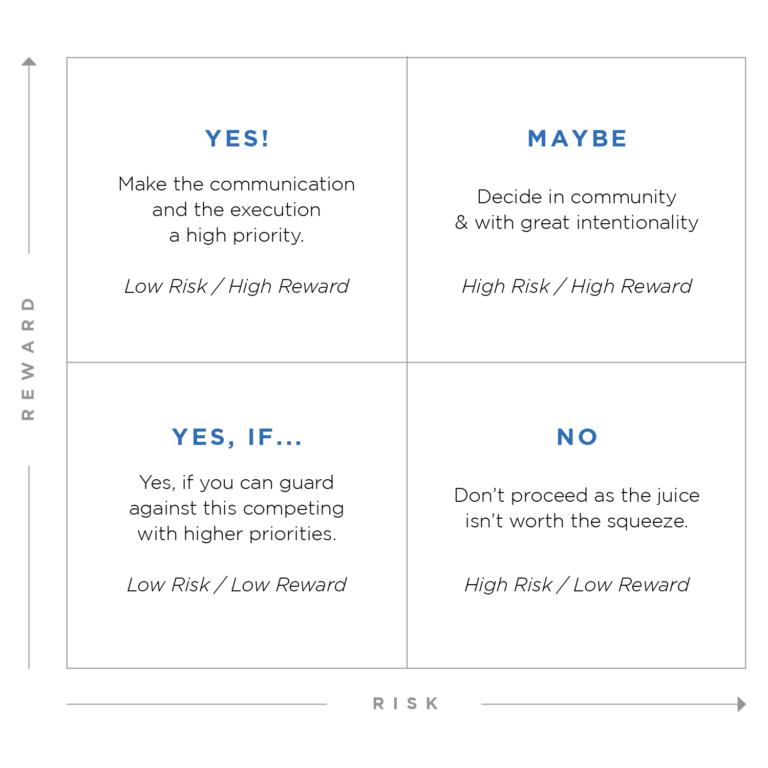Wise leaders often think about the risk and the reward in their decision-making. Here is a tool that I have used with my team to help frame our decision-making. Many leaders have used “risk and reward” language in making decisions, and I have simply put the sentiment into four boxes.

If making a small tweak provides a small reward but is accompanied by only a small risk (as long as your investment doesn’t take away from more fruitful opportunities)—then go for it. Incremental improvements help over time. If launching a new initiative has a low risk but a high reward, the decision is simple—yes! Prioritize the decision and the accompanying actions as very important. If a potential decision has a high risk and a low reward, the decision is also fairly simple. Do not proceed as the reward is not worth the risk. The challenging decisions, the ones which require lots of prayer, wise counsel, and intentional planning, are the ones where the risk is high and the reward is high.
What I Appreciate About This Framework
Not all decisions are created equal. Understanding what decisions are low-risk can increase the speed of a team. If a leader views all decisions as major decisions, they likely suffer from decision paralysis, which will inevitably slow down the team and the organization. At the same time, high-risk decisions should not be made in isolation or haphazardly.
How This Framework Has Helped Me
Since I have the tendency to overthink and overanalyze, and thus bring unnecessary stress and leadership anxiety upon myself, realizing some decisions are low-risk has helped me make decisions more quickly. This realization coupled with preaching to my own soul that my identity is secure because of Jesus and not the result of a decision has helped me enjoy the role God has given me more fully. The framework has also helped me say “no” much more frequently since some decisions are not worthy of lots of discussion and evaluation because the risk is clearly higher than the reward.
How to Use This Framework
Once you begin thinking this way, you will find yourself and people you lead using the “risk” and “reward” language. Deciding if a risk or reward is high or low is often subjective, but the framework helps lead the discussion and the decision.






